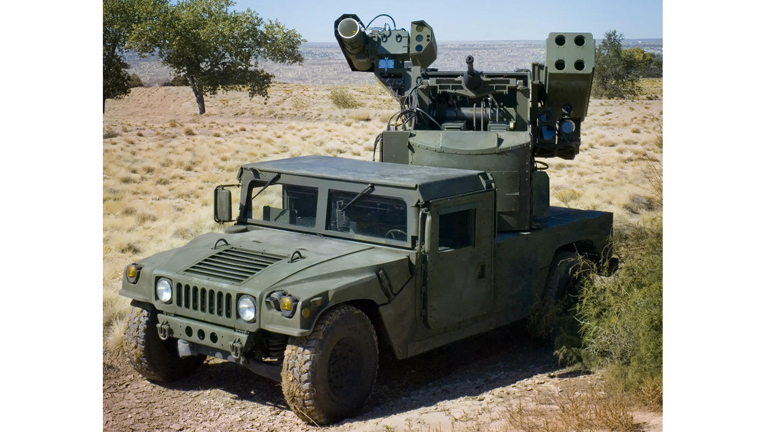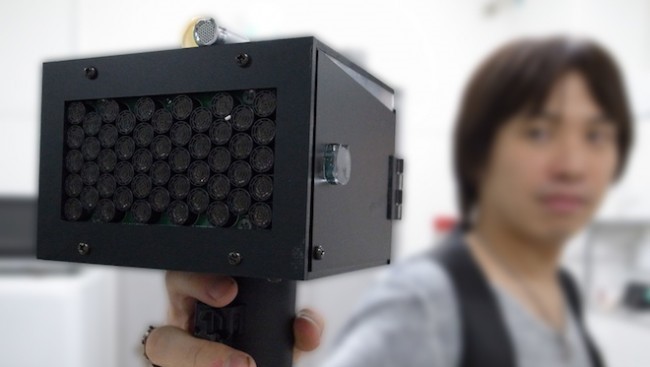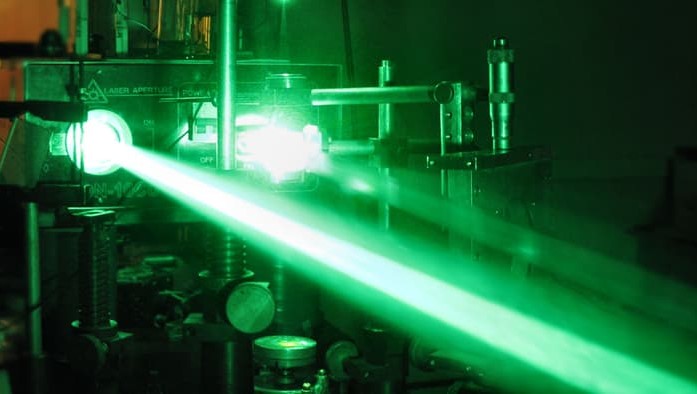10 awesome sci-fi weapons that could be built with today's technology
From Iron Man suits to shockwaves devices, these deadly bits of tech could well be the face of future wars


Introduction
I think we can all agree that science fiction is pretty darn cool, right? It's like the real world but 10 times more wizzy. Sci-fi has the best vehicles, the best metropolises and, of course, the best military tech and weaponry.
Lightsabers, blaster rifles, cloaking devices, exoskeletons - the list goes on and on. You are literally spoiled for choice. However, aliens in sci-fi don't get to have all the fun, as some of these awesome sci-fi weapons can be made today, in admittedly prototype-style incarnations, in the real world.
Here are 10 of the coolest, most advanced pieces of military tech that are currently in development today.

Laser Avenger
While it isn't currently on Tony Stark's armoury list for The Avengers, the Laser Avenger could well be joining a real military force very soon. Designed to shoot down craft such as drones or small attack aircraft, the Laser Avenger (as its name so cryptically suggests) doesn't use missiles or other ballistic projectiles but instead relies on a superpowered laser.
Designed by a branch of American aviation multinational Boeing, the device utilises an infrared laser with an intensity in the tens of kilowatts range. The device itself has been fitted to a AN/TWQ-1 Avenger (an anti-air defence vehicle currently in use by the US Army).

TALOS operator suit
Okay, it's not quite a suit of armour in a briefcase, but the TALOS is a far more realistic exoskeleton designed to amplify the physical prowess of its wearer, effectively making them stronger, faster and more effective in the field. Currently in development by the United States Department of Defence, the Tactical Light Operator Suit boasts full-body protection from bullets, in-built systems for both heating and cooling, potentially life-saving oxygen and hemorrhage controls, and a full array of sensors.
It's been in the works for years, but the DoD are planning to unveil the finished article in 2018 with hopes to roll it out to special forces in both the US Army and the Marines.

DREAD centrifugal gun
The idea for a centrifugal weapon - a gun that fires projectiles at speeds faster than a gatling gun - has been knocking around for centuries. In fact, a super early prototype was even built during the American Civil War and was a steam-powered cannon that could fire 15 metal objects in 16 seconds.
Modern incarnations, such as the DREAD gun first discussed in 2003, can fire 120,000 rounds per minute of .308 and .50 caliber round metal balls at 8000 feet per second (ft/s). To give you a little perspective, your average assault rifle can crank out around 900 rounds in a minute. It's also uses electrical energy to launch each round, rather than the traditional combustion of gunpowder, so it's also disturbingly quiet.

Quantum camouflage
Hey, why have camouflage when you can quantum camouflage, eh? Because anything with the word 'quantum' in it must be better, right? (James Bond films notwithstanding.) Unlike traditional optical camouflage (which aims to recreate an operator's given surroundings using a series of cameras and projectors), the theory behind quantum camouflage instead bends light around a subject to effectively transpose the characteristics of an environment directly on top of them.
Canadian firm Hyperstealth Biotechnology claims it's come up with a working version - the company, which works on a number of projects with the Canadian military, showed off its 'Quantum Stealth' tech way back in 2014.

Active Denial System
Imagine a weapon that fires an invisible wave that makes your skin feel likes its boiling off your bones, all without causing any damage to your body? Terrified? We are just writing it. Rather than being something out of the Hunger Games books, the Active Denial System is a real technology that's currently in development in the US military (in fact, it was even deployed in Afghanistan in 2010, although it never saw combat).
The 'heat ray', currently being developed by American defence contractor, works by sending out 95 GHz of microwaves to get you feeling terrible, but weather changes can cause it fail so it's still in need of a little work.

Neuromorphic drones
DARPA (Defense Advanced Research Projects Agency) is currently working on a new type of drone, one that doesn't require an operator to work it from a distance. Instead, these new hyper advanced drones have been designed to work independently - better yet, they've been envisioned with neuromorphic chips (technology designed to emulated the pathways and receptors of the human nervous system).
In other words, these drones have been created to go out into the battlefield and learn. Calling up almost every Call of Duty storyline from the last few years, these self-determining drones could well become the frontline of future warfare.

Voice suppressor
Back in 2012, a group of Japanese researchers built an incredibly disturbing piece of technology - a device that could seriously mess with your noggin and render you practically speechless. In its basest form, the gun in question takes the loud speech of a particular individual and sends it back at them modulated in a way that completely blots the out.
Named the 'SpeechJammer', this powerful little gizmo even has a laser guidance system so it can zone in on a particular target. It's been created to be used in traditionally quiet venues such as libraries to (if toned down) gently remind patrons to keep schtum. Of course, it also has more practical uses, such as being employed in riot control.

‘Bessel’ tractor beam
Seemingly plucked straight out of an episode of Star Trek or an instalment in the eternal Star Wars franchise, the iconic tractor beam isn't just the product of fiction, it's finally becoming a practical real-life technology. Say hello to the 'Bessel beam'.
This NASA developed technology is based around the concept that light itself emits an incredibly small amount of pressure, that if directed correctly, could move a physical object in a given direction. The Bessel beam is, in effect, a series of lasers fired together to create enough pressure. Another version of the concept also uses lasers to create a vortex that produces much the same effect.

Memory wiping drug
Clearly someone has been reading too many books in the Divergent series (yes, that's the second time we've reference YA fiction in this list - don't judge), where a super-advanced serum was designed that would wipe an enemy soldier's memory, removing the need to kill them. Or maybe it was someone going retro with Men in Black's Neuralyzer - who knows. Either way, someone has come up with a way of potentially wiping someone's memory clean like a disc.
Back in 2009, a group of brain researchers devised a chemical compound that blocked the production of certain substances in the brain that help you retain information. If the right dose, the drug could effectively wipe a person's memory for a given period.

Superheated force field
Bringing our list somewhat full circle, Boeing (it of Laser Avenger fame) is also working on a real life force field. The perennial science fiction technology has long been on the military wishlist and it looks like the concept has been as a kind of superheated wall that would absorb the impact of incoming objects such as bullets or explosives.
The original patent (filed back in 2012), states the technology is a "method and system for shock wave attenuation via electromagnetic arc." - which, loosely translated, means creating a form of ionised air around a given object. Think of it like a plasma field that uses lasers to create a superheated barrier. In terms of defence, such a tech could change warfare forever.
Get all the latest news, reviews, deals and buying guides on gorgeous tech, home and active products from the T3 experts
Dom Reseigh-Lincoln has been writing for T3 for over half a decade now, covering everything from mobile phones and laptops right through to video games and gaming peripherals. Purveyor of an excellent beard, as well as some perpetually cheeky offspring, Dom likes to wind down in his spare time by listening to heavy metal.